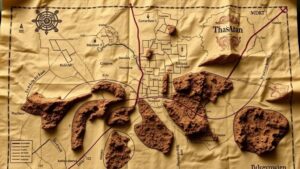How to Master the Art of Recovery and Good Manners in Metal Detecting
How to Master the Art of Recovery and Good Manners in Metal Detecting
Metal detecting is a thrilling hobby that combines the excitement of treasure hunting with the history of the land beneath our feet. But, as with any pursuit that intersects with public spaces and nature, it is crucial to master the art of recovery and practice good manners. This article will explore techniques for effective recovery of finds, the importance of etiquette, and how to ensure the sustainability and positive perception of the hobby.
Understanding Recovery Techniques
Effective recovery is essential in metal detecting not only to safeguard finds but also to protect the integrity of the environment. Recovery techniques differ depending on the type of site, the terrain, and the nature of the find. Here are key techniques:
- Using the Right Tools: Employing appropriate tools can make recovery efficient and minimally invasive. Common tools include trowels, hand diggers, and pinpointers. For example, a pinpointer can help locate a targets exact position after the initial dig, reducing the need for extensive digging.
- Plug Technique: This is a method where the soil is removed in a plug to preserve the surrounding area. A well-executed plug will be a U-shaped piece of soil that can be easily replaced, which minimizes disruption to the landscape.
- Extracting Finds Carefully: Always handle artifacts delicately to avoid damaging them. For example, if you discover a historical coin, ensure it is cleaned appropriately–using only water and a soft brush rather than harsh chemicals that might strip away valuable patina.
When using these techniques, you are not just preserving the find; you are also participating actively in archaeological practices that respect the significance of the land you are exploring.
Good Manners and Ethics of Metal Detecting
Practicing good manners in metal detecting encompasses respect for other enthusiasts and the larger community. following guidelines can enhance your reputation and that of the hobby as a whole:
- Ask for Permission: Always obtain permission from landowners before detecting on private property. This not only displays politeness but also fosters relationships that can lead to future permissions. For example, many metal detectorists maintain excellent rapport with landowners by offering to share findings or assisting with property upkeep.
- Stick to Legal Areas: Familiarize yourself with local laws and regulations governing metal detecting. This includes understanding protected sites, such as archaeological zones where detecting is prohibited. Respecting legal boundaries helps prevent conflicts with authorities and preserves the archaeological record.
- Leave No Trace: Ensure you fill in any holes made during excavation and remove all litter from the area. Following the Leave No Trace principle not only protects ecosystems but also promotes a good image of metal detectorists to the public.
For example, a dedicated metal detecting club regularly organizes cleanup events in local parks. This proactive approach not only benefits the community but also helps counteract negative perceptions about the hobby.
The Importance of Community and Sharing Knowledge
Building a network within the metal detecting community is beneficial both for social interaction and knowledge sharing. Engaging with fellow detectorists allows you to learn advanced recovery techniques and etiquette.
- Participate in Local Clubs: Many regions have local metal detecting societies that provide opportunities for group hunts, share tips, and conduct educational workshops. These gatherings foster good practices and enhance the skills of participants.
- Online Forums and Social Media: Platforms like Facebook groups or dedicated forums offer spaces to ask questions, share finds, and discuss techniques. This exchange of information helps cultivate a culture of respect and support.
By involving yourself in the community, you can better our collective hobby, ensuring it continues to grow positively in public perception.
Real-world Applications and Case Studies
Several case studies illustrate the benefits of mastering recovery and manners in metal detecting. In 2017, a group of detectorists discovered Roman artifacts in the UK. By using careful recovery techniques to avoid damage and promptly reporting their findings to local authorities, they contributed valuable information to the historical narrative of the region and garnered positive media attention for metal detecting.
Similarly, after conducting a clean-up event in a historic battlefield area, a metal detecting club received permission to search the site later, resulting in significant historical finds. r commitment to good manners and community service opened doors for future collaborations with local historians.
Conclusion
Mastering the art of recovery and practicing good manners in metal detecting are imperative for enjoying the hobby responsibly. By employing effective recovery techniques, respecting community standards, and nurturing relationships within the metal detecting community, enthusiasts can ensure that the treasures found are preserved for future generations and that the hobby maintains a favorable reputation.
Actionable takeaways include:
- Invest in quality recovery tools and practice various techniques to minimize impact.
- Always seek permission when detecting on private property and familiarize yourself with local laws.
- Engage with the metal detecting community through clubs and online forums to enhance your skills and contribute positively to the hobby.


